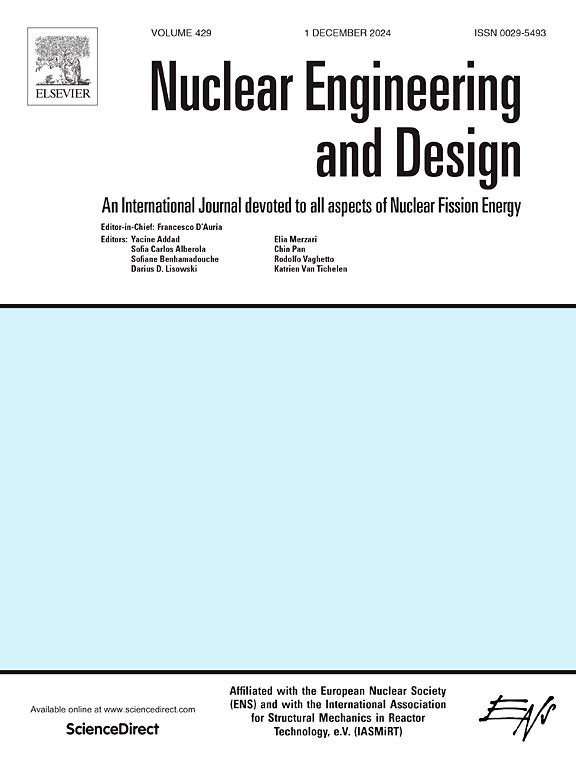A failure criterion for nuclear fuel cladding due to internal gas
IF 1.9
3区 工程技术
Q1 NUCLEAR SCIENCE & TECHNOLOGY
引用次数: 0
Abstract
The primary method for assessing cladding failure due to internal gas pressure involves comparing peak and ultimate pressures. When a small amount of gas is present, the pressure decreases as the volume expands at high temperatures, allowing the cladding to operate safely. This paper proposes a gas equilibrium-based failure criterion for cladding, determined by comparing the sectional force required by the gas with what the structure can provide. Finite element analysis compared cladding failure under three different boundary conditions (most used), using bidirectional fluid–structure interaction to investigate failure from internal gas. The critical load-bearing gas moles and the cross-sectional force changes with radial displacement for both hollow cladding and cladding with a fuel pellet were investigated. It was found that the critical gas quantity ratio is significantly smaller than the volume ratio, with gas pressure decreasing more rapidly in the pellet case.
求助全文
约1分钟内获得全文
求助全文
来源期刊

Nuclear Engineering and Design
工程技术-核科学技术
CiteScore
3.40
自引率
11.80%
发文量
377
审稿时长
5 months
期刊介绍:
Nuclear Engineering and Design covers the wide range of disciplines involved in the engineering, design, safety and construction of nuclear fission reactors. The Editors welcome papers both on applied and innovative aspects and developments in nuclear science and technology.
Fundamentals of Reactor Design include:
• Thermal-Hydraulics and Core Physics
• Safety Analysis, Risk Assessment (PSA)
• Structural and Mechanical Engineering
• Materials Science
• Fuel Behavior and Design
• Structural Plant Design
• Engineering of Reactor Components
• Experiments
Aspects beyond fundamentals of Reactor Design covered:
• Accident Mitigation Measures
• Reactor Control Systems
• Licensing Issues
• Safeguard Engineering
• Economy of Plants
• Reprocessing / Waste Disposal
• Applications of Nuclear Energy
• Maintenance
• Decommissioning
Papers on new reactor ideas and developments (Generation IV reactors) such as inherently safe modular HTRs, High Performance LWRs/HWRs and LMFBs/GFR will be considered; Actinide Burners, Accelerator Driven Systems, Energy Amplifiers and other special designs of power and research reactors and their applications are also encouraged.
 求助内容:
求助内容: 应助结果提醒方式:
应助结果提醒方式:


